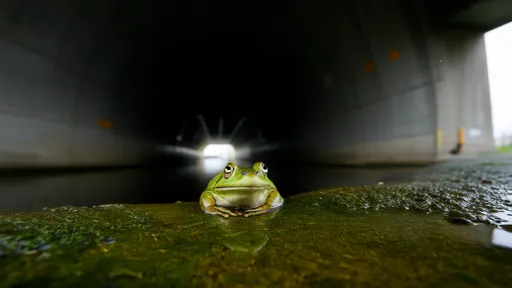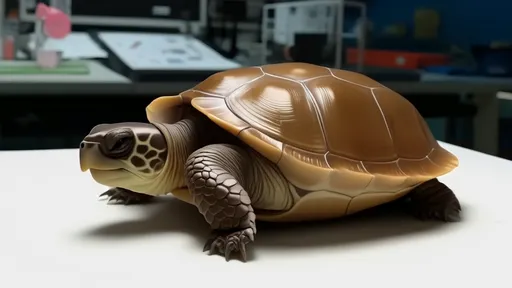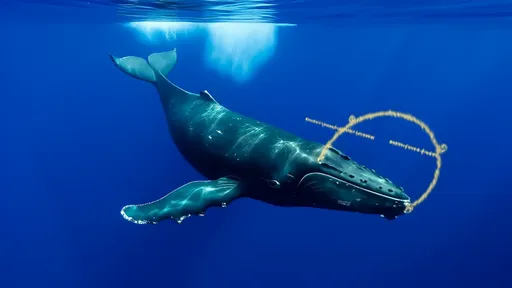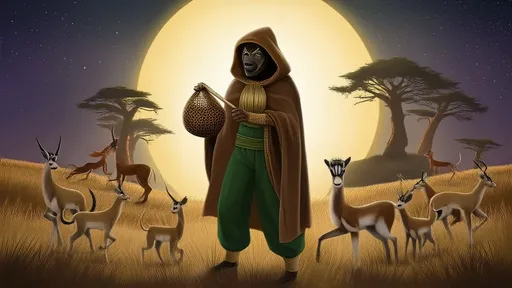The skies darken as a swirling mass descends upon the horizon, not with rain, but with the relentless hunger of millions of tiny jaws. Locust swarms have plagued agriculture since the dawn of civilization, but today, satellite technology offers a fighting chance against these devastating invasions. Across continents, scientists and farmers alike now rely on sophisticated early warning systems that track migratory patterns in real-time, turning the tide in humanity's oldest war against crop destruction.
Modern locust tracking begins with eyes in the sky. Earth-observation satellites equipped with multispectral imaging detect subtle vegetation changes across vast territories. When unusually lush greenery appears in typically arid regions – often following cyclones or unseasonal rains – it triggers alerts at monitoring stations. These ephemeral oases become breeding grounds where desert locusts can multiply 20-fold within months, creating the conditions for swarm formation.
The Food and Agriculture Organization's (FAO) eLocust3 system exemplifies this technological frontline. Field officers in vulnerable nations carry ruggedized tablets to upload ground observations that integrate with satellite data. This marriage of terrestrial and orbital intelligence creates predictive models with startling accuracy. During the 2020 East Africa outbreak, such systems provided 6-week advance warnings, though regional conflicts hampered preventive spraying efforts.
Resolution isn't measured in pixels alone. Advanced algorithms now analyze vegetation health indices like NDVI (Normalized Difference Vegetation Index) to distinguish between ordinary drought recovery and potential locust breeding sites. The European Space Agency's Sentinel-2 satellites provide critical 10-meter resolution imagery every five days, while NASA's MODIS instruments offer daily continental overviews. This multi-layered approach catches what single systems might miss.
Migration tracking poses unique challenges. Swarms ride wind currents at altitudes up to 2,000 meters, traveling 150 kilometers daily. Thermal imaging helps distinguish insect clouds from weather phenomena, as locust clusters maintain specific temperature signatures. Nighttime tracking proves particularly valuable, as cooler temperatures cause swarms to settle, revealing their daytime trajectory origins when combined with wind pattern analysis.
Data alone cannot prevent devastation. Effective response requires translating satellite coordinates into ground operations. Drones now supplement traditional pesticide spraying, with swarm-intercept algorithms processing real-time satellite feeds to guide their flight paths. In Kenya, such systems helped protect 70% of threatened crops during recent outbreaks, though pesticide resistance remains an emerging concern.
The human element remains irreplaceable. Pastoralists in Mauritania report unusual insect activity via smartphone apps that geotag observations. These crowd-sourced data points validate satellite findings and provide granularity that orbital imagery cannot achieve. Such integration of traditional knowledge with space-age technology represents the system's true sophistication.
Climate change intensifies the urgency. Warmer oceans fuel more frequent cyclones that create ideal locust breeding conditions. The 2022 Pakistan floods demonstrated this vicious cycle, where floodwaters receded to leave perfect breeding marshes, necessitating unprecedented satellite monitoring coverage. New machine learning models now incorporate climate projections to predict future outbreak zones years in advance.
Limitations persist. Cloud cover during monsoon seasons can blind optical satellites precisely when monitoring proves most critical. Radar satellites like Sentinel-1 help penetrate cloud layers, but their interpretation requires specialized training that many frontline nations lack. The next generation of systems aims to automate such analysis, with the FAO currently testing AI-driven alert protocols.
Beyond immediate crisis response, satellite archives provide invaluable research tools. By analyzing decades of migration patterns, scientists identified previously unknown staging areas where scattered groups coalesce into destructive swarms. This historical perspective enables targeted preemptive strikes against locusts before they achieve critical mass.
The economic argument for sustained investment proves compelling. A single square kilometer swarm consumes as much food as 35,000 people daily. The 2003-2005 West Africa outbreak cost $2.5 billion in crop losses despite $400 million spent on control measures. Current satellite systems deliver benefit-cost ratios exceeding 15:1 by enabling precisely timed interventions.
Emerging technologies promise greater precision. Experimental systems track individual swarm movements using specialized radar that detects the unique wingbeat frequency of locusts. When combined with satellite vegetation data, this could enable predictions down to individual field-level threats. Such granularity may soon allow farmers to sleep through the night without fearing the morning's devastation.
International cooperation forms the system's backbone. The FAO's Desert Locust Information Service shares data across 60 countries, with China's newly launched Fengyun satellites joining the global network. This collaborative spirit overcomes political tensions, as locusts recognize no borders. Recent data-sharing agreements between historical adversaries like India and Pakistan demonstrate the unifying power of this shared threat.
As the system evolves, so too must preparedness. Satellite tracking provides the warning, but effective response requires maintained infrastructure, trained personnel, and accessible pesticides. The true measure of success lies not in technological sophistication, but in empty skies over filled granaries. In this ancient struggle between farmer and pest, silicon and steel now fight alongside scythe and soil.

By /Jul 7, 2025

By /Jul 7, 2025

By /Jul 7, 2025

By /Jul 7, 2025

By /Jul 7, 2025

By /Jul 7, 2025

By /Jul 7, 2025

By /Jul 7, 2025

By /Jul 7, 2025

By /Jul 7, 2025

By /Jul 7, 2025

By /Jul 7, 2025

By /Jul 7, 2025

By /Jul 7, 2025

By /Jul 7, 2025

By /Jul 7, 2025

By /Jul 7, 2025

By /Jul 7, 2025